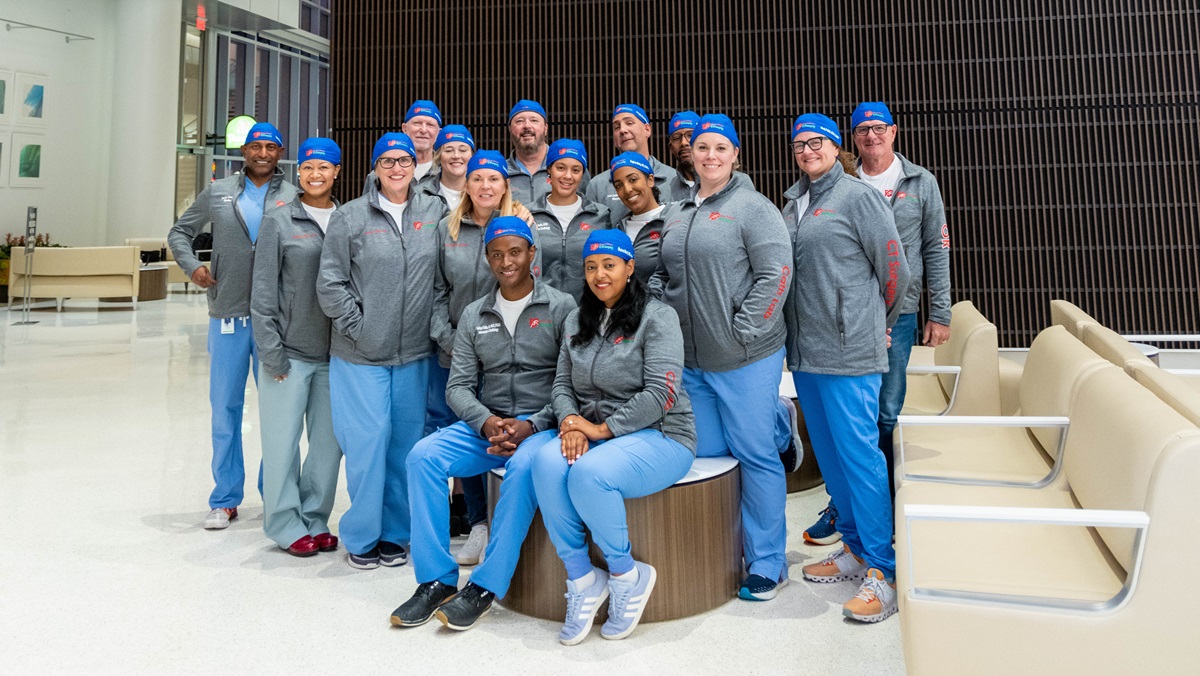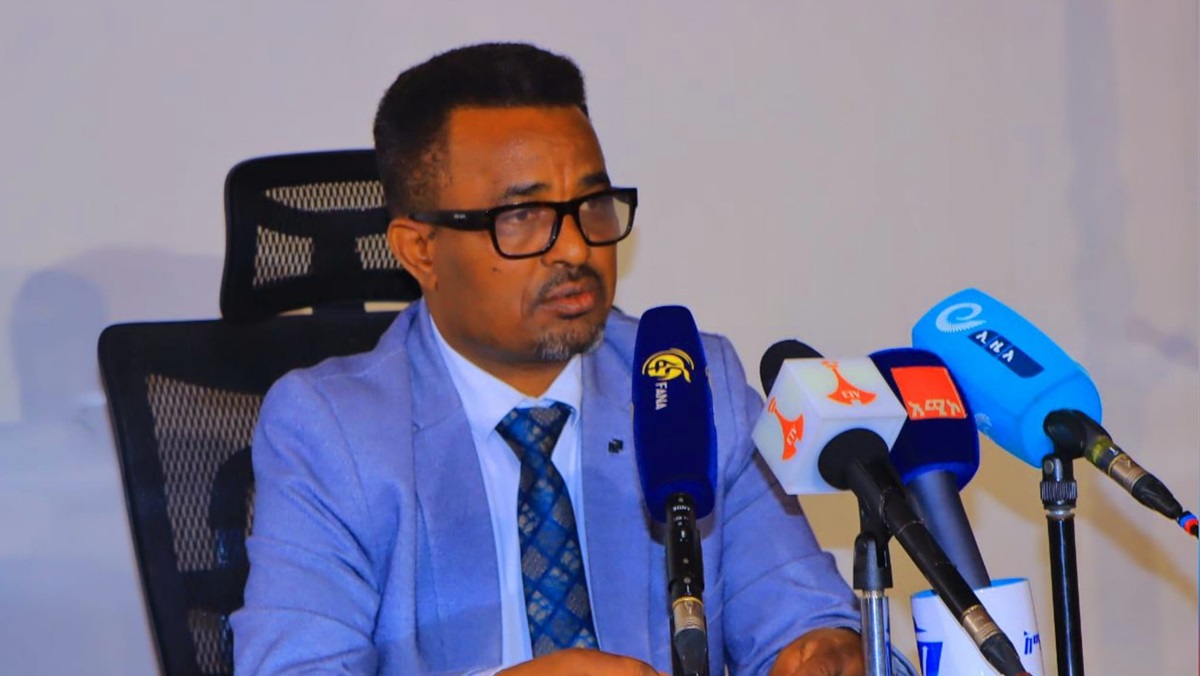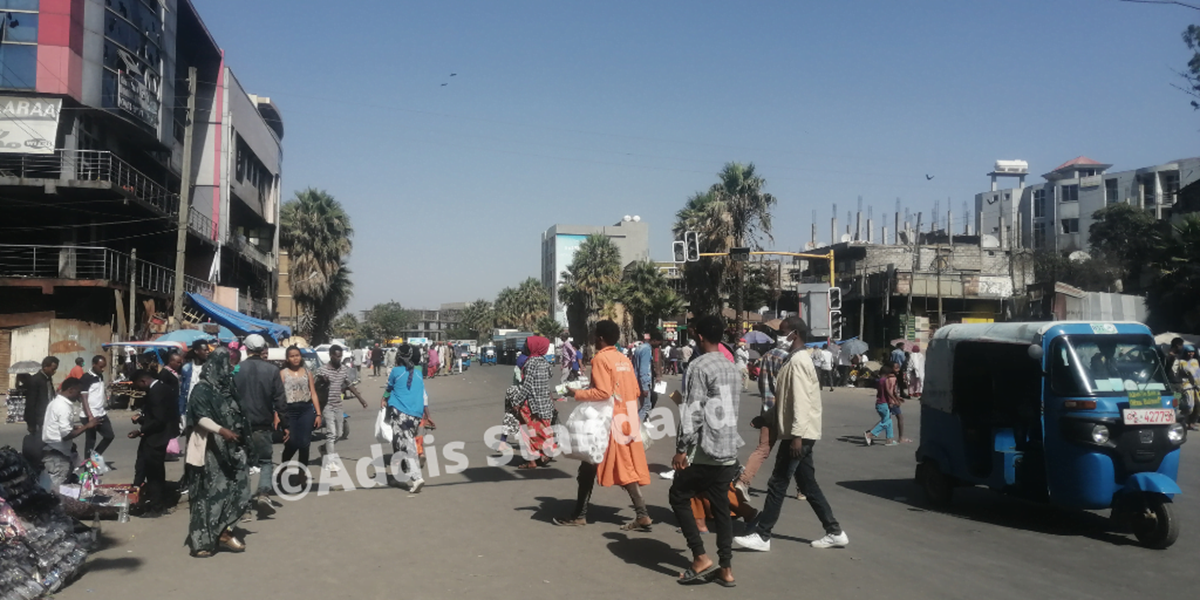In-depth analysis: Displaced by months-long violence, hundreds of Amhara community members from western Oromia seek refuge in Addis Abeba and Arsi zone

By Etennesh Abera @EteneshAB &
Getahun Tsegaye @GetahunTsegay12
Addis Abeba- Displaced by months-long violence and persecution, hundreds of civilian members of the Amhara community who lived in Wollega zone, Oromia regional state, are seeking refuge in Addis Abeba; hundreds more have been made to relocate in Arsi zone, Oromia regional state, an investigation by Addis Standard reveals.
Since the last week January this year, Addis Standard followed the story of members of the Amhara community who sought refuge in two separate churches in the capital Addis Abeba. At the time a group of IDPs was sheltered in St. Estifanos Church in Kirkos sub-city, near the city’s Meskel square, while another group was sheltered in St. Michael’s church in Yeka sub-city. Addis Standard team visited both sites and spoke with the IDPs and community organizers.
This is their story:
IDPs from the Horo Gudru zone at St. Estifanos church in Kirkos Subcity
In the last week of January, a total of 107 IDPs, 30 of which are children arrived at St. Estifanos Church in Addis Abeba, Deutsche Welle Amharic reported. Some of the IDPs who arrived in the capital still don’t know the whereabouts of their families according to the report. The IDPs said that unidentified gunmen were indiscriminately attacking religious institutions and residents. The IDPs complained that their repeated pleas to the local authorities fell on deaf ears.
Another interviewee said the attacks began in June last year and that Oromia special forces and national defense forces had been deployed in August the same year, but were not able to fend off the attacks. “When we saw the massacre of government forces, we couldn’t stay any longer,” he said.
Addis Standard found out that the IDPs did not stay at the church for more than 3 days and their reason for coming to the capital was to “ask the Oromia regional government for a solution.” By the time Addis Standard visited the church, the IDPs were being loaded on a bus escorted by the police and officials from the city administration. The IDPs were very apprehensive about speaking to the media and the police were seen preventing Addis Abeba city residents who brought donations from talking to the IDPs. One of the IDPs who managed to speak to Addis Standard said “We are going back to where we came from.”
“Our original home places were Homa Galesa and Qeru kebeles in Abe Dunguru Woreda of Horo Guduru Wollega zone. We fled attacks by OLA/Shanee in May 2021. Many were killed and injured while properties, including houses and churches, worth millions of ETB were destroyed”
Desta
Desta, who spoke to Addis Stanard days after the 107 IPDs were taken away from St. Estifanos church by buses said that the group of IDPs came to Addis Abeba from the Arsi zone where they were staying since May last year. He introduced himself as the ‘representative’ of the IDPs and recalled that the 107 IDPs from the Arsi zone arrived at Estifanos church, Addis Ababa to report concerns regarding their displacement.
“Our original home places were Homa Galesa and Qeru kebeles in Abe Dunguru Woreda of Horo Guduru Wollega zone. We fled attacks by OLA/Shanee in May 2021. Many were killed and injured while properties, including houses and churches, worth millions of ETB were destroyed. We, therefore, fled to the Arsi zone and settled in Merti Woreda. We stayed at St. Medhanialem church in Gologota kebele,” he narrated.
Desta further told Addis Standard that a total of 419 IPDs currently settled in the Arsi zone are desperately seeking help in relation to their displacement. He stated that the Arsi zone administration didn’t provide them solutions prompting them to travel to Addis Abeba to express their concerns. ‘’Despite all the efforts we made, all governmental bodies paid a blind eye to our suffering,” he said. According to Desta, the security forces and the church [St. Estifanos] committee told the IDPs that their presence in the church would demand higher security surveillance in relation to the 35th AU Summit which was about to take place at the time. “We were told that the best option for us would be to return to the Arsi zone.”
The community representative recalled how the residents of Addis Abeba and St. Estifanos church parishioners provided them food and necessary facilities during their stay in the church. He also mentioned two individuals whose last names he couldn’t remember, Zelalem and Taye. The two were helping the IDPs facilitate transportation and other related expenses. According to Desta, Memhir Zelalem was an individual philanthropist who gave them 22,200 ETB. He further detailed that Taye was the head of the security bureau of Kirkos Sub-city who set up the public buses for the IDPs. Addis Standard’s attempts to get hold of Kirkos Sub-city security bureau weren’t successful.
Eyasu Mulugeta, another member of the IDP community said that neither the Oromia regional government nor any other government bodies offered them help for the past 9 months. “Gologota Medhanialem church and the local residents have greatly been helpful in providing food, clothes, and shelter,” he noted. Desta and Eyasu both said that the Oromo Liberation Army (referred to by government officials as Shanee) targeted them because of their identities.
He further stated that the Oromia Disaster and Risk Management Commission had only helped them 30 quintals of wheat for the entire 419 IDPs during their nine months-long stay in Merti Woreda of the Arsi zone. “Very few of us, who were able to earn money from daily labor, rented a house while most of us are still in the church. The local residents have been providing us with food and clothes. With the exception of the 30 quintal wheat, governmental bodies have not helped us at all,” he complained.
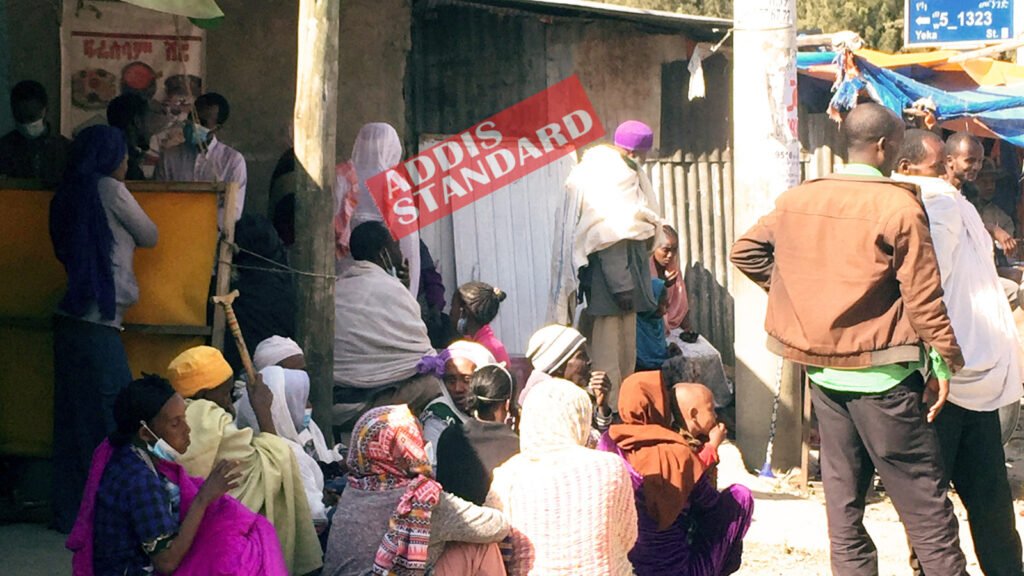
Reta Hailu, Martti Woreda’s Communication Office Head, told Addis Standard that the IDPs from Horo Guduru arrived in Gologota kebele in May and September of 2021. ” Martti Woreda officials coordinated local residents and concerned bodies to provide food, clothes, and shelter for the IPDs,” he said. Reta put the total number of IDPs at 80. When asked the number of IPDs that Addis Standard got a report of was 419, not 80, he admitted that he is freshly appointed to the position and asserted that the former report indicated a total of 80 residents. “I’ll make sure that the woreda officials will go to Gologota kebele to see and help them,” he pledged.
IDPs from the East Wollega zone at St. Michael church in Yeka Subcity
Birara Getanew was born in South Gondar Taj Gayint woreda and has been a resident of the Sibu Sire woreda in the East Wollega zone since 1985. He remembers his life in Bekojima Kebele as “harmonious”. He explained that ethnically targeted attacks started the previous year. “Most of our relatives were killed, properties were destroyed,” he said.
He went on to narrate an onslaught that started on the dawn of October 16 last year. “The OLA killed sixty-nine people and displaced many others. Some of us came to Addis Abeba on October 20 and ended up here just outside the compound of Yeka Michael Church.” Addis Standard asked Birrar how they were surviving since their arrival in the capital. “We sought help from the Yeka sub-city administration and the Mayor Adanech Abebe’s office but our pleas fell on deaf ears,” he continued, “Yeka Michael church hasn’t specifically offered any help nor did the Amhara regional government. Individuals and some volunteers, however, have been so supportive in providing food and clothes.” There were elders, women, and infants on the site. According to Birara there are a total of are 135 comprising 35 households.
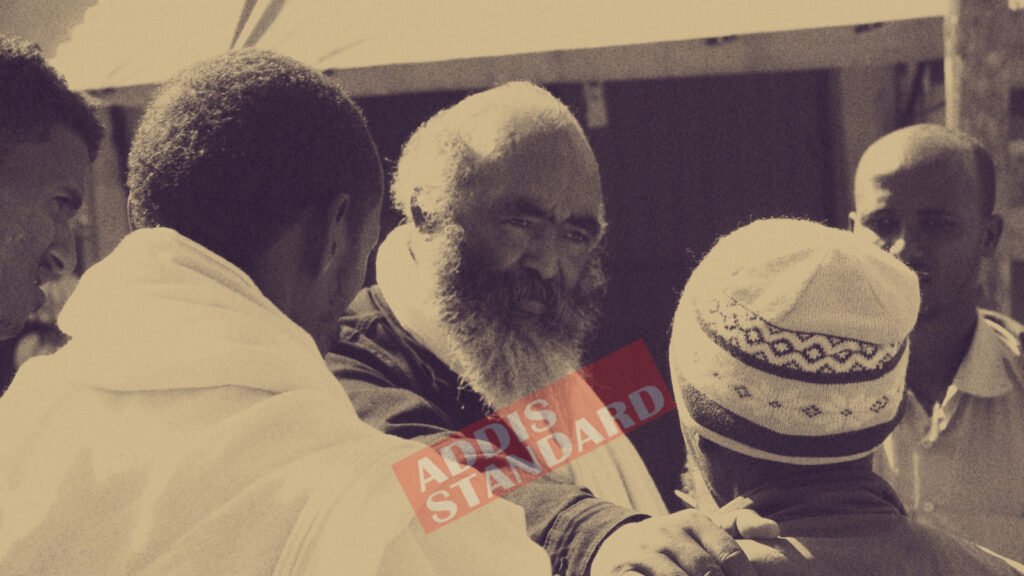
Tamiru Degefa Sew, who described himself as a ‘borderless volunteer’, told Addis Standard that he has been coordinating individual volunteers from Addis Abeba and abroad to help the IDPs “I am an individual borderless volunteer who is trying to facilitate aid from local residents and abroad in terms of food and clothes,” he added, “Even though the majority of them are Amharas, I met some Oromos among them.”
Birara recalled, “While we were back in East Wollega, we alerted the regional government security forces and they came to our rescue. Of the deployed Oromia forces in June 2021, one Oromia Special force was killed while another policeman was injured. When the attack intensified, the deployed forces left the area and we were vulnerable. It is not the Oromo residents who inflicted the attacks. It is rather the armed OLF/Shane group. In fact, there were some Oromos who really tried to protect us from the attacks until they fell victims themselves. Some of them were displaced with their children and ended up here in Addis Abeba.”
“Our properties and houses were turned to ashes. We’ve lost many of our loved ones. There are still many people being kidnapped. We demand a temporary shelter here in Addis Abeba until things get back to normal.”
Birara Getanew
According to Birara, members of the Amhara community have been displaced from the 22 kebeles of Sibu Sire woreda. He speculated, “The woreda administration has left the area so the regional government must have known about the situation when official communication from the area discontinued.” He also accused local officials of proposing ideas to the community to go back to where they came from. “The area isn’t safe yet. The government knows very well that there is a security threat in the area. It has been a year since the road from Bahir Dar to Nekemt was blocked,” he continued, “We’re not going back home. Our properties and houses were turned to ashes. We’ve lost many of our loved ones. There are still many people being kidnapped. We demand a temporary shelter here in Addis Abeba until things get back to normal.”
Like Birara, Kassayew Lemma, another IDP remembers the age-old harmonious co-existence of the Amhara and Oromo communities. “Oromos are our brothers and we never had any problems with them,” he said. Though Kassayew failed to provide details, he slammed the local administration for creating ‘mistrust’ among the two ethnic groups saying,” The problems emanate from the Oromia regional government officials on kebele to woreda levels.”
Addis Standard spoke to the chairperson of the Amhara Youth Association, Yaregal Assefa who was visiting the IDPs. He stated that the association is based in Addis Abeba and mainly works on volunteer activities. “We’re providing them clothes, blankets, and food. We’re here to make their voices heard by concerned government bodies,” he said.
When asked about the conditions of their displacement, most IDPs interviewed by Addis Standard at the time refused to disclose information including the name of kebeles and woredas they came from citing fear for their security.
Yaregal complained that government officials and Yeka Michael Church were reluctant to provide help to the IDPs. “We called upon volunteers who are willing to provide food and clothes. The IDPs have not faced many problems when it comes to food and clothes. The biggest challenge is finding shelter. Despite some volunteers offering tents, we could not find an open place to set the tents up. We are demanding a piece of land from the city administration,” he added. Addis Standard’s repeated attempts to get hold of the Yeka sub-city administration were not successful.
In December last year, Addis Standard reported that members of the Amhara community who fled violence in the East Wollega zone were sheltered in makeshift camps set up in a church compound and youth centers in Addis Abeba.
When asked about the conditions of their displacement, most IDPs interviewed by Addis Standard at the time refused to disclose information including the name of kebeles and woredas they came from citing fear for their security. “We are afraid of being attacked and we don’t want to go back to where we came from,” they said.
Likewise, the head of Abune Aregawi Church in Zenebework area, Kolfe Keranio sub-city told Addis Standard about displaced people from the East Wollega zone who were said to be sheltered in the compounds of the church, “About 120 IDPs of Amhara ethnic background were sheltered in the church for two weeks. With the help of the federal government, Oromia regional government, and the Amhara regional government, they were relocated to other places in the East Wollega zone.”
A report by the Ethiopian Human Rights Commission (EHRC) revealed the killing and displacement of the residents of Gida Kiramu woreda in the East Wollege zone. The report cited the residents as saying the Oromo Liberation Army, referred to by government officials as Shanee killed civilians. The commission also noted that members of the Amhara community killed 60 people in retaliation. AS


